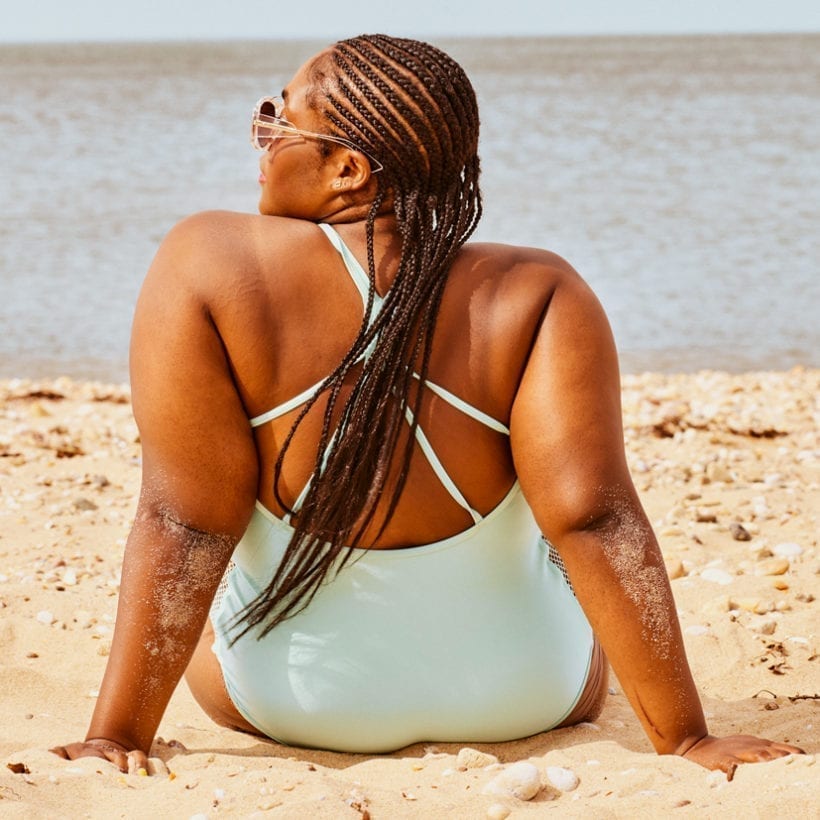It is about time to soak up the sun, but before you do, double-check the ingredients listed on your favorite SPF. Just this February 2019, the U.S. Food and Drug Administration (FDA) proposed a new ruling to ensure the safety and efficacy of sunscreen, a ruling with the potential to shake up the entire sunscreen industry since the FDA guidelines for sunscreens had not been updated in about 40 years.
In a nutshell, the FDA is proposing that all current and potential new ingredients in sunscreens be adequately tested for safety. Read: for it to be proven whether they can get absorbed into the bloodstream and cause endocrine disruptions, cancer or other health problems. Up to this point, the science behind all these ingredients has been incomplete at best, and the FDA is scrutinizing and spurring on newer scientific studies to draw conclusive evidence.
So all our lives we have been told to slather on more sunscreen and religiously reapply every two hours, but is our health now at-risk based on new science? Here is what you should know: Active ingredients in sunscreens come in two forms, mineral (zinc oxide, titanium dioxide) and chemical filters. The most common chemical sunscreens on the market contain a combination of two or three ingredients: oxybenzone, dioxybenzone, octinoxate, octisalate, octocrylene, homosalate, avobenzone, cinoxate, ensulizole, meradimate, padimate O, sulisobenzone, PABA (aminobenzoic), trolamine salicylate.
In the proposed rule, the FDA categorized all these ingredients into three categories: generally recognized as safe and effective (GRASE), not GRASE, and controversial. Of all these ingredients, only two made it into the GRASE list: zinc oxide and titanium dioxide. They do not penetrate the skin and are, therefore, not absorbed into the bloodstream. The not-GRASE category was headlined by PABA (aminobenzoic) and trolamine salicylate, which have both been deemed unsafe and not to be worried about, since they are not in the market in sunscreens today. And the remaining 12? Questionable. The FDA is essentially saying they just do not have enough data to determine if they are safe for use.
Studies suggest that some of these ingredients are absorbed into the bloodstream in as little as one day and can actually do harm.
“Some of the theoretical risks of these sunscreens in humans have to do with hormonal effects and being hormone disruptors,” says Whitney Bowe, M.D., a board-certified dermatologist in New York City. “Another theoretical risk would be that they’re carcinogenic and potentially have cancer-promoting properties. We don’t have enough studies showing that it does that in humans, but we also don’t have enough studies showing that it doesn’t.”
In fact, animal studies suggest that some of these ingredients are indeed absorbed into the bloodstream in as little as one day and can actually do harm. “They suggest that oxybenzone can enter the bloodstream and lead to thickening of the uterine lining in animals, so it has an estrogenic effect.” A Journal of the American Medical Association Dermatology study published in early May 2019 found that it took just one day of avobenzone, oxybenzone, octocrylene and ecamsule use for them to enter the bloodstream at high enough levels to be concerning and to warrant a follow-up safety study. The study also found that the concentration of three of the ingredients even continued to rise as daily use continued as stayed in the body at least 24 hours after application. Additionally, Hawaii even legally banned the sale and distribution of of sunscreen containing oxybenzone and octinoxate last year because they were causing major damage to coral reefs by hindering their ability to adjust to climate change and recruit new corals.
“There’s a lot of controversies and a lot of concern right now surrounding chemical sunscreens,” adds Bowe. So, you might be thinking, “In that case, it is a no-brainer to pick a physical sunscreen then, right?” Wrong. Unfortunately, when physical sunscreens are tested by third-party testers such as Consumer Reports, they tend to not perform as well as chemical sunscreens. They do not last as long or provide the same kind of protection — according to Consumer Reports, they even rarely meet their label SPF.
So, what is next? The FDA must come to a final ruling on this proposed regulation by November 26, 2019. In the meantime, Bowe recommends that you continue wearing chemical sunscreens because the benefits still outweigh the risks of skin cancer. “I know that exposure to the sun is the most preventable and avoidable cause of skin cancer, as well as signs of aging such as fine lines, brown spots, rough textures, dilated pores, etc.,” says Bowe. “Given the information we know, I’m still recommending that my patients use chemical sunscreens on limited areas and then use sun-protective clothing.” That is one of several alternative safety methods. The FDA also recommends wearing sunglasses, and a hat that provides adequate shade to the whole head and seeking shade whenever possible during peak sunlight.
Bowe agrees: “Sun protective swimsuits and clothing are truly your summer essentials in 2019!”
We only recommend products we have independently researched, tested and loved. If you purchase a product found through our links, Sunday Edit may earn an affiliate commission.







